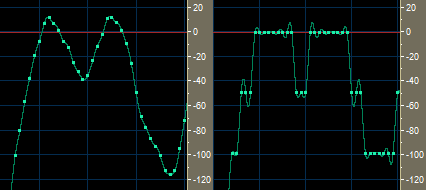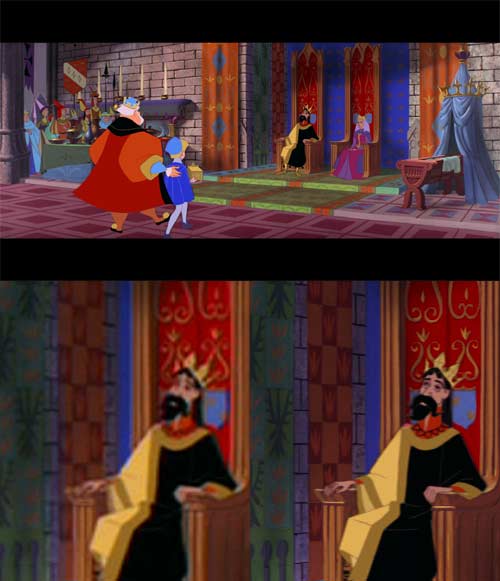Home Entertainment Blog Archive
Brought to you by your friendly, opinionated, Home Entertainment and Technology writer, Stephen DawsonHere I report, discuss, whinge or argue on matters related to high fidelity, home entertainment equipment and the discs and signals that feed them. Since this Blog is hand-coded (I like TextPad), there are no comments facilities. But feel free to email me at scdawson [at] hifi-writer.com. I will try to respond, either personally or by posting here emails I consider of interest. I shall assume that emails sent to me here can be freely posted by me unless you state otherwise.
This archive is for an uncertain period commencing Thursday, 11 June 2009
I've done a little tidy-up and as a result I've got about two hundred empty DVD cases. Happy to give them away to anyone who wants to come and pick them (or some of them) up. All of them work. All have been used. Condition ranges from okay to good. Most are white, but some are black. Lots have a centre-piece for holding a second disc.
Email or call. Probably most convenient for someone who lives in Canberra.
I received a package today from 20th Century Fox Home Entertainment with the two disc Blu-ray version of The Longest Day, plus The Siege and Big Trouble in Little China. All these are due for release on 5 August 2009, along with five 'double packs':
- Nightwatch/Daywatch
- The Transporter/Transporter 2
- 28 Days Later .../28 Weeks Later
- The Hills Have Eyes/The Hills Have Eyes 2
- X-Files: The Movie/The X-Files: I Want to Believe
Warner Bros is releasing a bunch of Blu-ray discs in Australia on the same day, some of which I'm really looking forward to:
- 'Watchmen': The Complete Motion Comic
- Surveillance
- Woodstock International Ultimate Collector's Edition (40th Anniversary)
- Woodstock Director's Cut
- How the West Was Won Special Edition
- 300: The Complete Experience
- Risky Business
- Cool Hand Luke
- Fracture
- Grumpy Old Men
- Falling Down
- Pelican Brief
- A.I.
When I'm preparing Blu-ray vs DVD comparisons, my process these days is to rip most or all of the 'I' frames from the Blu-ray first, organise them, then select the comparison frames and rip DVD frames to match those. That's because it's a lot easier to step around DVD video streams than Blu-ray ones, and tools for capturing a selected frame from a Blu-ray are rare and clunky.
So the Blu-ray ripping process often leaves me with some ten to fifteen thousand still images on my hard disc, most of them between one and two megabytes in size. In order to aid in the selection process it is necessary to use a 'Thumbnail' view, but I find that Windows gets increasingly clunky with this, the more files there are in any folder. So I create a sufficient number of folders so that each only has to hold a thousand files.
A problem has been the time it takes to move the files into their respective folders. Recently I had one particularly daunting prospect of nearly 20,000 files, so I decided to do it a different way. It was a bit extra effort at the start, but the results could be reused time and time again.
To do it I used the DOS Batch capability. DOS is the old white text and black screen that has existed since before the days of the IBM PC. It became popular with that platform, but in fact the Microsoft Disc Operating System was very similar in operation to CP/M.
Batch files are essentially a list of DOS commands in a text file, the name of which ends in .BAT. You can type in the file name and it will run the commands one after the other.
The application I use to rip frames from the Blu-ray names the files in this form: 00006007.png. As you would expect, the number that forms the file name is incremented by one for each additional file. So the commands for moving the files are easy.
First, I create a folder one level down from the folder holding all the files:
md 06Then I move files from 6000 to 6999 to it:
move 00006*.png 06Simply have a list of these, replacing the '6' with first '0', then '1' and so on up to the necessary number.
The purpose of all this was to allow me to type one simple command in the DOS box and then go away while the computer did the work, rather than dragging a thousand files, waiting until that was done, dragging another thousand files and so on.
What surprised me, though, was how quickly the batch file was completing. I've just finished this process with First Blood. To test my time impressions I deployed the stop watch. I dragged a block on 999 files into a folder and then timed how long it took to complete: 35.8 seconds. Then I ran the BAT for the remaining 8692 files within a DOS box. That took 27.0 seconds to complete.
That meant that DOS was more than a magnitude of order quicker in doing the 'move' than Windows. Why would Windows be so horribly inefficient?
Universal Pictures has announced the release of Ridley Scott's famous Gladiator on Blu-ray. They aren't skimping, delivering it on two dual layer discs, including the theatrical release (155 mins) and an extended version (171 mins), plus 11 hours of extra stuff. Universal's 'U-Control' feature for popping up additional information is included.
I was playing with that on the Blu-ray of The Bourne Identity last night (I'll be putting up a Blu-ray vs DVD comparison in the next couple of days), and it really is very good.
Anyway, the version of The Gladiator that I have is the PAL Superbit release, so it should make for an interesting comparison. If I can get them to let me have a review copy (Universal seems to be a bit reluctant on that front compared to the other studios).
Release date: 30 September 2009.
Subjective assessment of home entertainment equipment is important because there are characteristics of performance which aren't well conveyed through measurements. I am not saying that these things aren't captured by the measurements (thoroughly and carefully
 conducted); merely that few people glancing at a frequency response graph which shows an elevation of a couple of decibels in the two to six kilohertz region will realise that in practice, this means that these speakers will sound more forward and, sometimes, even a little more harsh, than speakers lacking this measurement.
conducted); merely that few people glancing at a frequency response graph which shows an elevation of a couple of decibels in the two to six kilohertz region will realise that in practice, this means that these speakers will sound more forward and, sometimes, even a little more harsh, than speakers lacking this measurement.
But this should be approached humbly, and with due recognition of its limitations. I maintain that no-one can hear the difference between two accurate, properly operating amplifiers, working within their capabilities with regard to output and load. If someone hears a difference, then they are either fooling themselves, or one (or both) of the amps is not accurate, is not working properly, or is being overloaded in some way.
If you use low efficiency loudspeakers of high power handling capability to play music at a high level, you will get better sound with a more powerful amplifier than a low powered one. But again we are talking about them working within their capabilities.
Some, however, claim that they can hear these differences because the human ear is such a wonderfully sensitive instrument.
Wrong.
It is wrong because the human ear is not an instrument. It is indeed wonderfully sensitive (although less so that some animal ears). But it is no instrument.
By 'instrument' I, and I think those who make this claim, mean a device for measuring things. In fact, our ears -- or more properly, our sound detection and interpretation mechanisms (which includes the relevant parts of the brain) are lousy at measurement. Because that is not their purpose.
Let me repeat that. Our ears and brains were not developed to give an accurate picture of the world about us. They were developed to give a tolerably accurate one.
Tolerably accurate means good enough to allow us to survive in our ancestral environments. That means that we need to be able to hear danger approaching and determine the direction from which it approaches.
 This is not an open ended capability. It costs resources to make some aspect of an organism work better, so there is a trade-off between accuracy in hearing and other survival and reproductive capabilities, such as better eyesight or stronger legs or a more flexible brain.
This is not an open ended capability. It costs resources to make some aspect of an organism work better, so there is a trade-off between accuracy in hearing and other survival and reproductive capabilities, such as better eyesight or stronger legs or a more flexible brain.
Furthermore, the accuracy must be a trade-off against processing speed. The ears generate signals based on varying air pressure density in their vicinity. These signals are processed by a brain that has limits to its processing power (for the same reasons of the economy of an organism mentioned above). It takes shortcuts to derive the information it needs to help you stay alive.
Because it is far more useful to have ears that tell you a predator is stalking you from that direction instantly, even if they are wrong one time in a thousand, than it is to have perfectly accurate information five seconds later. For by then you may well be dead.
This is a bit hard to demonstrate with sound, so let's look at a couple of visual examples which demonstrate how our seeing mechanisms let us down ... if you think that they ought to clinically capture the world as it is. The bottom one has its instructions in the graphic. For the top one, just follow the apparent rotation for a moment as each purple dot flashes away in turn. Nothing awry there.
Now focus on the black cross. Maintain your centre of focus on that spot. Instead of the circling being due to the disappearance in turn of the purple dots, you will see a green dot circling. Keep watching that black cross. After a few seconds the purple dots will all disappear and all you will see is the green dot circling.
These optical illusions exploit vision processing shortcuts used by a brain to deliver us an actionable picture of the world right now, rather than an accurate picture of the world too late.
As for sound, thank goodness for our ears' inaccuracies. Consider: if our ears gave a perfectly accurate aural picture of what's out there, stereo and surround sound would not work. In the real world, something that makes a sound produces it all from one place, and it radiates outwards in all directions. With stereo and surround, we fake that with path lengths and delays and relative volume levels from multiple sources. And with good gear it can sound wonderfully convincing.
But it wouldn't if our ears were good enough to measure with.
(I gathered the two graphics from emails sent to me a long time ago. The sources were not stated. If anyone owns these images and wants me to remove them or whatever, please contact me.)
Two posts down I mentioned the five musical samples at
Is 24-bit Recording Really Better?, from Ethan Winer. Very useful for blind testing, these things, because they each start from  the same 24 bit recording, present it in the same 16 bit CD-compatible uncompressed WAV file. The original is presented as -- in line with best industry practice --
dithered in conversion to 16 bits. It is also presented as truncated to 16 bits (the eight least significant bits are simply omitted), and also truncated to about 13, 11 and 9 bits.
the same 24 bit recording, present it in the same 16 bit CD-compatible uncompressed WAV file. The original is presented as -- in line with best industry practice --
dithered in conversion to 16 bits. It is also presented as truncated to 16 bits (the eight least significant bits are simply omitted), and also truncated to about 13, 11 and 9 bits.
In the latter cases it has been returned to 16 bits resolution for CD compatibility, but the large steps of the lower resolutions have been changed, as shown to the right. This is the same portion of the music from two of the files, closely zoomed in. The scale to the right indicates the decimal value of the samples, each of which is represented as a dot on the wiggly line. The left side is from the 24 bit truncated to 16 bit file, whereas the right side is from the lowest resolution version.
There are some problems with the comparison files which I shall take up with Mr Winer, but for what it's worth, my own personal tests did not suggest much difference. In particular, playing the files through high fidelity loudspeakers with no processing applied to the signal, I was unable to distinguish any of the files from any of the others. At all.
With high quality headphones, I was able to distinguish what I think is the lowest resolution version. Barely.
Later, experimenters at Caltech felt that Feynman's very presence exerted a sort of moral pressure on their findings and methods. He was mercilessly skeptical. He loved to talk about the famous oil-drop experiment of Caltech's first great physicist Robert Millikan, which revealed the indivisible unit charge of the electron by isolating it in tiny, floating oil drops. The experiment was right but some of the numbers were wrong--and the record of subsequent experimenters stood as a permanent embarrassment to physics. They did not cluster around the correct result; rather, they slowly closed in on it. Millikan's error exerted a psychological pull, like a distant magnet forcing their observations off center. If a Caltech experimenter told Feynman about a result reached after a complex process of correcting data, Feynman was sure to ask how the experimenter had decided when to stop correcting, and whether the decision had been made before the experimenter could see what effect it would have on the outcome. It was all too easy to fall into the trap of correcting until the answer looked right. To avoid it required an intimate acquaintanceship with the rules of the scientist's game. It also required not just honesty, but a sense that honesty required exertion.Even something as seemingly free of bias as measuring stuff in physics can be biased in reality by expectations. Who would have thought that the great Millikan may have actually made a mistake?James Gleick: Genius: The Life and Science of Richard Feynman
So it isn't really a surprise when you read something like 'The Dishonesty of Sighted Listening Tests', which relates how virtually indistinguishable loudspeakers (as far as blind tests went) became very different when they could be seen, and how the ranking orders of them changed.
My brother has drawn my attention to an episode of 'Skeptoid' in which (third item) the magical benefits of expensive audio cables are dismissed, along with the value of face masks in combating swine flu, the radioactive dangers of depleted uranium, and some weird medical treatments.
I pretty much agree with the response*. What interested me more was one of the comments, which referenced Ethan Winer's website. That has some very interesting material on it. Winer knows computers, audio recording, and actually playing music very well. He has a bunch of very sensible thoughts on the myths of some audiophiles. A good starting point is his 'Audio Magic' section under 'Ethan's Magazine Articles'.
Too many articles to discuss in detail, but I would suggest you download the five musical samples at Is 24-bit Recording Really Better? and try yourself out on some blind testing. Kind of goes with my own 'What is Dither?' article, in which I explain (with the assistance of pictures), how dither actually works to, at least theoretically, improve sound.
I for one am going to be going through these articles for some time, learning more. Oh, one more: a plausible explanation for some differences in the subjective experience of sound -- differences which are conventionally thought should not be there. Called 'Why We Believe', using very interesting measurements, he suggests that differences may be largely due to slight differences in head position. He shows pretty conclusively that large differences in frequency response -- certainly quite audible -- result from moving the listening point by just a few centimetres.
Truth be told, I think he is too kind. I myself have experienced audible differences which, it has soon become apparent, are entirely the result of my expectations. Because I am essentially a chicken -- I would be very embarrassed if I couldn't reliably distinguish a phenomenon which I may note in an article under test conditions -- I refuse to rush into print until I've checked multiple times. When it comes to cables and amplifiers and the like, I find that the phenomenon has disappeared, or the thing I thought I heard was there all along, just previously unnoticed with other equipment.
One more pointer. Mr Winer links to an excellent article 'Science and Subjectivism in Audio'. I highly recommend this article if you think there may indeed be something in the more mystical claims of some in the audiophile community.
* I'm not suggesting you go cheap and nasty for your cabling needs. Just be sensible. $5 for a set of interconnects suggests that they might be a light for quality control, and even lack proper shielding. $20 should provide excellent quality. $200 is a waste.
For speaker cables, I use good thick stuff which sells for about $5 a metre. Just get the cable impedance as low as reasonably possible for speakers. Remember, the cable resistance for interconnects is totally insignificant compared to the typically 47,000 ohm input to which it's connected. For speakers, a cable's 0.1 ohms is still a significant proportion of the three to thirty ohms of resistance that an amplifier my face across a loudspeaker's operating frequency range.
 Slavish copying into picture quality disaster - Thursday, 18 June 2009, 12:21 pm
Slavish copying into picture quality disaster - Thursday, 18 June 2009, 12:21 pm
The Australian version of the BBC TV show Top Gear is growing on me. Unfortunately, it copies the original so slavishly that this extends to some of the more horrible photographic choices. In particular, it follows a practice about which I earlier wrote in 'Insane artistic choices'. It uses -- sometimes, and not consistently -- a picture processing technique of drop field deinterlacing. That is, the second field is simply omitted, and replaced by a repeat of the first field. This has the intended effect of adding a slight film-like jerkiness to motion. It has the unpleasant side effect (I'm assuming that this isn't actually desired!) of reducing the vertical resolution by half. Instead of getting 576 lines, you are only betting 288.
The shot to the right is from a segment within the studio, where there isn't even the excuse of motion. Note all the jaggies. Note, also, that I have not retouched this in any significant way. I grabbed a frame digitally from the video stream and saved it. I cropped the picture in Photoshop to the size you see, and then recompressed it into JPEG. The re-compressed image is indistiguishable to the eye from the original.
I have not scaled or deinterlaced this in any way. This was a section of the picture actually broadcast on Australian TV in 2009!
Here are some new side-by-side Blu-ray vs PAL DVD comparisons that I've just put up:
Some really stand out, such as this shot of a newspaper in Sin City:
It's not just the readabily of the text, but also the visibility of the dots used to print photos.
The Blu-ray of Sleeping Beauty looks pretty good too. Note that the comparison DVD was the remastered one:

I've also added a video bitrate graph and a PIP one as well, plus some stats, to my earlier posting for Batman Begins.
A few weeks ago I recorded The Da Vinci Code from high definition TV, since I was too busy to watch it during broadcast, and in any case I wanted to test out the Panasonic Blu-ray recorder I was reviewing. The recorder had to go back to Panasonic, so I used it to burn the movie to a BD-RE disc (ie. re-writable). Then, before I had a chance to watch it, the formal Blu-ray release of the movie (on a massive two disc special edition) was sent to me. So yesterday I thought I'd compare a couple of frames to see if there is any marked difference between a 12-ish Mbps MPEG2 free to air HD broadcast and a 24.44Mbps MPEG4 AVC Blu-ray version. I ripped a few thousand frames from the latter in preparation, and then started to try finding matching frames from the former.
It wasn't to be. The first thing I noticed was that the resolution of the TV version was 1,440 by 1,080 pixels. I had forgotten that WIN TV, which was the broadcasting station for the movie, still uses the lower resolution (full HD resolution is, of course, 1,920 by 1,080 pixels). Not really comparable in that case.
And then I compared a frame from each. The Blu-ray was 2.35:1 while the TV version was 1.78:1. Here is the same frame from both (Blu-ray top, TV bottom):

So, even with HDTV, you may well not be getting the original aspect ratio.
Blu-ray players have to cope with many more signal standards than DVD. On the audio side, the latter deal with PCM, Dolby Digital, DTS and (for non-US players) MPEG2, whereas Blu-ray players must deal with all of those, plus two new varieties from Dolby and DTS, plus multichannel PCM. For video, DVD had only MPEG2, whereas Blu-ray adds VC1 and MPEG4 AVC.
It is with resolutions that things really go berserk. DVD had to accept 352 x 240, 352 x 288, 352 x 480, 352 x 576, 704 x 480, 702 x 576, 720 x 480 or 720 x 576 pixel video streams at either 60 (for all the 240 or 480 pixel tall formats) or 50 hertz (for the rest). On the output side, things were simpler. The output had to be either 480i60 or 576i50. No matter which the original resolution was, it was scaled to match one or other of those output formats. (Progressive scan conversion and upscaling to high resolution are simply later enhancements, not requirements.)
Blu-ray players have to cope with all that and more. I shall ignore all those super low res formats and just deal with the actual video formats available on Blu-ray discs. These are: 480i60, 576i50, 720p60, 720p50, 1080i60, 1080i50 and 1080p24. The way things are developing, the two 720p formats seem to be very rare, so I won't bother mentioning them any further. As it happens, the 1080i formats can have physical resolutions of either 1,920 or 1,440 by 1,080 pixels, but I'm not going to worry too much about that here either.
The output formats typically available from a Blu-ray player are: 480i60, 576i50, 480p60, 576p50, 720p60, 720p50, 1080i60, 1080i50, 1080p60, 1080p50 and 1080p24. That's a lot of options! But it isn't as complicated as all that because some of these output resolutions are better fitted to the modern home entertainment display, and some are natural fits for the source.
Since most new high quality displays offer a physical resolution of 1920 by 1080 pixels, and accept 1080p signals at 50, 60 and 24 hertz, 1080p is usually the best choice. The frequency should depend on the frequency of the source signal.
Blu-ray players typically allow you to select 1080p24 as an output separately from the others, because the first generation of 1080p-capable displays did not necessarily also support 1080p24. So what you normally find is a resolution setting (you can choose from 480/576p, 720p, 1080i or 1080p), with a separate setting to 1080p24.
If you select 1080p as the resolution, and switch on 1080p24, then any 480i60 or 1080i60 content will be output at as 1080p60, and any 1080p24 content will be output at 1080p24. The 1080p24 will have no processing applied to it at all. The 480i60 will be deinterlaced (ie. converted to progressive scan) and scaled up, and 1080i60 will merely be deinterlaced.
Similar processes happen for 576i50/1080i50 material, except that the output format in those cases is 1080p50.
Now here is what one Blu-ray player -- which shall remain nameless -- does. It is pre-fixed to Australian television standards. If you select '1080p' as the output resolution, everything is converted to 1080p50. Everything. If you play a 1080p24 Blu-ray disc, it gets output at 1080p50. Because of the mismatch in frame rates, some of the film frames have to be repeated more frequently than others, so camera pans are jerky. Right now I have the Australian version of 'Citizen Kane' DVD playing. This is NTSC format, despite being released here. It, also, is showing jerkiness during camera pans, since the player is showing it at 1080p50.
Likewise, if you select '1080p24', then everything gets converted to 1080p24. Even PAL and 1080i50 material. Despite that meaning that instead of frames being repeated to adjust the timing, frames are dropped.
So it's worth paying attention to these things when you're selecting your Blu-ray player.